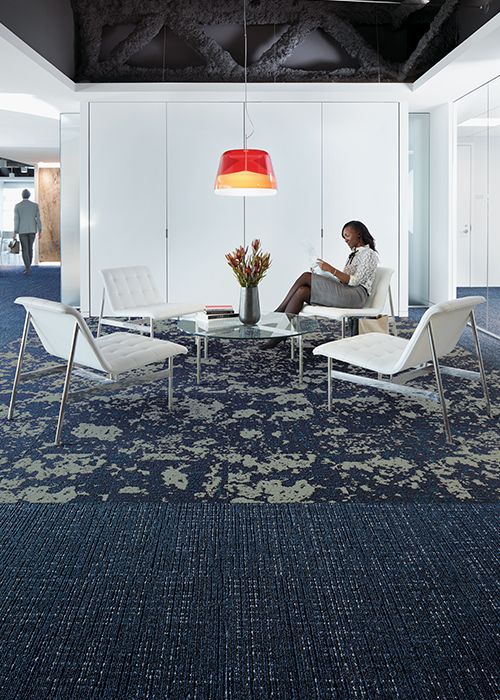How does a carpet go from initial inspiration to actual product on the floor?
Unsurprisingly, it’s a very technical process. Like a finely tuned machine, Interface Global Product Designer Kari Pei and her team take in a lot of information and translate it into beautiful flooring. But it’s not as easy as it looks.
Step One: Inspiration
“Everybody thinks that inspiration comes out of the blue.”
Pei has been designing products for years, and even as she rounds out three years at Interface, she’s still learning. From the company, her colleagues, and her customers. She stresses, “You have to know your customers. You have to be with them face-to-face, designer-to-designer, asking them: What influences your decision making?”
Understanding the needs of people actually using the product is key. It means talking to them and getting their feedback. It means understanding their day-to-day realities and how they use their spaces and what issues they have.
Really, it’s not just about aesthetics — it’s about creating a space that has multiple functions. “Problem solving is sort of inspiration. You really don’t want to put something out there that’s not a solution for our customers. You don’t want to give them something they don’t use.”

The design of Kari’s most recent collection, View From Above, came from the views out of her plane window during her weekly commute between NYC and Atlanta. Now, it touches down as luxurious carpet in any office space.
And even though her approach seems very scientific, Pei is still very much an artist.
“I used to create my own art, but this is my art now. When I look at almost everything, I’m thinking, ‘How would you convey that beauty into a product?’”
Step Two: Design
“My view is that the product should sell itself. It has to be unique. It has to justify its reason for being.”
Pei always starts with the big picture when it comes to design. She gathers her team first, and they look at overall design trends, draw ideas from fine art, and talk through the problem together.
One thing Pei always keeps in mind is Interface’s sustainability mission. “(Interface) is definitely a leader in sustainability, without a doubt. It’s a leader in providing beautiful options for sustainable customers.”
Does this mandate limit her creative process at all? She doesn’t seem to think so, given her experience creating beautiful and sustainable products. “That’s what so cool, you know, is when you take a stand and you get the industry to move. Ray did it. So coming to Interface was like the culmination of my whole career.”
Throughout the process, she treats Interface as her customer, asking “what the problems are, how does this relate to our brand?” She adds that the product design team spends a lot of time iterating, “so when we present (the product or collection) to the business, we have a really well-defined idea that they can either pull apart or take it as is, or they can walk away from it.”
Step Three: Visualizing the Product
This is when Pei really leans on her trusted team. She creates all of her art in Photoshop, which then gets moved into another software where the designers create the patterns that become product samples.
Sometimes, Pei will create posters of her artwork. These vibrant pieces hang on the walls of The Hive (the office where her product team works), mixed in with stacks of carpet, yarn samples, and art books — a world full of color that keeps the energy flowing and her team motivated. It’s important to her that “everyone has a voice, and everyone can create an idea. How we execute that idea depends on how it fits into the bigger picture.”
Clearly, product design is not solitary work. And while she has a strong team of designers and artists around her, the final product always has a clear touch of Kari Pei to it.
However, she eschews the idea of a signature style and focuses instead continuous themes within her work: “I think you can see my thumbprint on things, and I think that’s the imperfect. I really want to keep a sense of craft in the making of products — that’s what keeps it connected to the human. That’s what connects us all. That’s what makes it unique.”